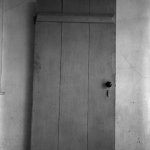When I realized that I need to try to blend my Judaism with my Witchcraft–that is, when I realized that the practice of enacting Jewish folk rituals alongside Witchcraft was becoming more confusing than fulfilling–I started doing random Google searches for other Jewish witches. That’s how I came across the Kohenet (Hebrew Priestess) Institute. From their About page:
This movement includes shamans, kabbalists, wilderness Jews, environmentalist Jews, priestesses of Shekhinah, Jewitches, practitioners of Israeli nature spirituality, and many others. This earth-honoring Jewish movement is one element of a larger circle of earth-based practitioners in many lands and cultures.
…
Some of us practice or have practiced shamanic, magical, or pagan spirituality, and are now exploring spiritual life in a Jewish context.
Ding ding ding! I have an uncanny talent for developing an interest in things right as they’re rising to prominence. Back in high school I was wearing headscarves and messenger bags just before they were cool.
Anyway, I bought a copy of their prayerbook. As an effort to blend Goddess/earth spirituality with Judaism, the siddur is a breathtaking success. The authors have mixed Kabbalistic explorations of the elements with modern poetry and quotes (including Starhawk!). They’ve included all the female-pronoun-based Shabbat prayers I’ve been searching for for years. The illustrations are maybe a little more rough than I’m used to in a $25 book, but they still speak to me as a Witch–for instance, the cover features a woman surrounded by stars and snakes, growing into a tree, with a spiral over her womb.
Perhaps the poem that made the deepest impression on me is “What is in the Goddess’s Tefillin?” According to the authors, Kabbalah holds that the tefillin represent an umbilical cord between a davener and God. Rabbi Jill Hammer explores the perspective from the other side of that cord:
who is like you
o my people
who bind your stories to your arms
I too
tie my story to the parabolic curves of my body
my physics like an alphabet
you must recover me
from the tar pits of the years
It gives me shivers.
I really liked the siddur’s interpretation of the morning and evening prayers (although, lacking a formal Jewish education, I still have a hard time sorting them all out). And something interesting happened after I read them–I felt inspired to begin reciting the Sh’ma in the morning and evening, along with my devotionals to the other deities with whom I have relationships. I had to cobble together my own Goddess-centered, female-pronouned Sh’ma, though, because for some reason, that was the only prayer in the book that was only presented as masculine. I guessed at the grammar from other prayers and chants.
I was initially worried that the siddur would be an attempt to reach out to Jewish Witches and Pagans and draw them back into “proper” Judaism. You see these kinds of attempts all the time–I’m thinking, here, of the supremely misguided Punk Torah, which was just a mainstream siddur with the word “punk” on the front. (Note: there’s currently a punktorah.org, but I can’t tell if it’s the same organization or not. Doesn’t look much different, in any case.) But the Kohenet Institute means what they say: they are unabashedly Pagan, offering prayers to Anat, Asherah, Lilith, and other deities. What drives me up the wall about Judaism is its uncritical acceptance of the rightness of monotheism. Well, of course the prophets and priests had to smash all the idols on the hillsides, we think. Our God was jealous of those other gods! And also those gods didn’t exist! And also it’s a metaphor! We set up logical paradoxes in which polytheism is simultaneously treason and wasted energy, but no one can explain why it’s so bad. I am Jewish in that my ancestors are Jewish and I embody their traditions, observing Shabbat and other rituals because they are worth observing. I am Pagan in that I pray to multiple gods. I’m simply not going to stop being those things, no matter how angry it makes mainstream Jews.
The one aspect of the siddur that I didn’t connect with was all of the praise heaped upon Shekhinah. Particularly in the Amidah, the prayers are filled with lavish thanks for Shekhinah’s kindness, tenderness, love, and blessings, and that was the point at which my eyes glazed over. I need a Goddess that is both Ouranian and Chthonic–pretty and kind and clean but also ugly and fierce and mucky. That’s the only way I can make sense of the world. How am I supposed to watch half my garden die in yet another SoCal drought, and then thank Shekhinah for her perfectness? At best, it sets up cognitive dissonance and a denial of anger and pain. At worst, it feels passive-aggressive: You’re so kind, Shekhinah! You’re so loving! (Did you, ahem, notice that you killed half my garden?) It cultivates that classic feeling of guilt and estrangement: if you’re so wonderful, and bad things are happening to me, then this must be punishment for something I did wrong.
But this is my own personal reaction. I’m not well-versed in Jewish theology and I don’t claim to be. If these prayers work for other Jewitches and Judeo-Pagans, they should embrace them with no apologies.
I’m really looking forward to the day when Kohenet is more than a tiny fringe movement–when I can come out of the broom closet to other Jews, when I can stroll into a shul and be reasonably sure there will be a place for someone like me, when drums and timbrels and dancing and chants are a normal, if not integral, part of Jewish worship. I don’t think that day is coming soon. But I have to believe that it’s coming.















